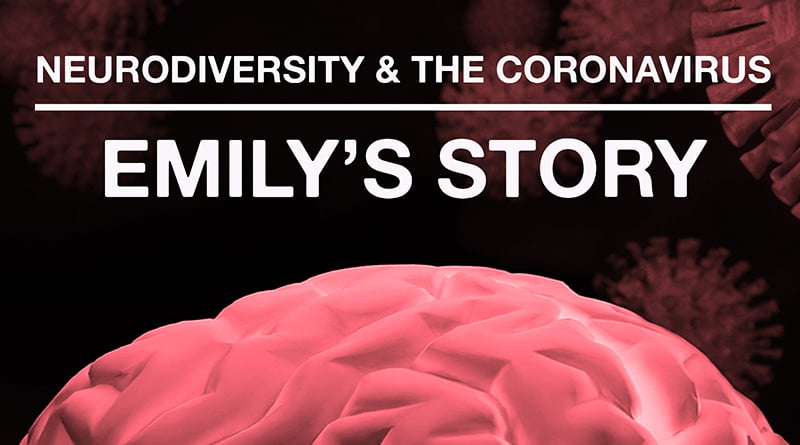
Fighting Against Neuro-Discrimination in the Workplace
By Damian Mellifont
Neurodivergent researcher Damian Mellifont discusses factors that contribute to neuro-discrimination in the workplace and of those that ‘fight the good fight’ against it.
Fighting the Good Fight
Do you know what neuro-discrimination is? Put simply, neuro-discrimination (or sanism) involves discrimination against neurodivergent persons [1]. People who are neurodivergent have minds that function in notably different ways from the norm [2]. Sanists (i.e., neuro-discriminators) do not fight fair. Neuro-discriminators might jab away with sneaky microaggressions. Microaggressions are small acts or comments that over a period of time can cause emotional damage [3]. With no referee present, a neuro-discriminator has opportunities to mercilessly strike their target with big shots (i.e., open acts of discrimination). Unfortunately, many neurodivergent persons report experiencing discrimination in the workplace [4]. It is therefore important to raise awareness about the factors that contribute to this form of discrimination and of those that fight the good fight against it.
My recently published article that was informed by a traditional review of the literature describes facilitators and inhibitors of neuro-discrimination in the workplace [5]. I will briefly discuss some of these factors before summarizing the ways forward.
Neurodivergence in the workplace – discrimination facilitators.
Bias against neurodivergent persons can play out in many troubling ways. Biased employers can resist employing these applicants [6]. Such neuro-discrimination is not constrained to job selection processes. Bias can also deny neurodivergent persons access to workplace accommodations [7]. Neuro-discrimination therefore has stamina and can hurt neurodivergent employees throughout their careers. Left unchecked, sanism has the power to knock these persons out of the workforce. And we are left with toxic workplaces where ignorance and intolerance are the winners at the expense of diversity and inclusion.
Silence is yet another facilitator of sanism in the workplace. Fears of stigma can deter staff from disclosing their neurodivergence [8]. Neurodivergent employees understandably do not want to be on the receiving end of ‘cheap shots’ following disclosure. It is at this time where colleagues and supervisors can change their views about a person’s competency [9]. By staying silent, however, some of these staff might be putting their productivity and wellbeing at risk [10]. This silence can therefore result in losses not only for the individual, but also for their employer.
Neurodivergence in the workplace – discrimination inhibitors.
Education can assist in fighting the good fight against workplace sanism. Where education is missing, employees might draw on negative stereotypes about neurodivergent persons [11]. Educational measures can also promote useful workplace accommodations [12]. Greater contact with neurodivergent persons might further assist in redressing prejudicial attitudes [13, 14]. Furthermore, responsible workplace leaders should be supportive of cultures that are inclusive of neurodivergence. Where flexibility, cooperation and respect are promoted, workplace culture improves for all [15].
Ways forward
The following actions endeavor to redress neuro-discrimination in the workplace [5] :
Recognize silence and bias as two facilitators of sanism in the workplace.
Conduct policy reforms that encourage a workplace culture where individuals are safe to disclose and discuss their neurodivergence.
Make sure that hiring panels are mindful of their responsibility to reasonably accommodate neurodivergent applicants.
Implement affirmative action to help to reduce the possibility of neurodivergent persons experiencing discrimination in hiring processes.
Provide mandatory education about the negative impacts of sanism and make it clear that such discriminatory behaviors are unacceptable.
Invest in studies to explore potential ways in which to increase contact among neurodivergent and neurotypical employees.
Sanists might be winning the early rounds in many workplaces. But the fight is far from over! Despite its fearsome and well-earned reputation, neuro-discrimination is not invincible. Employers who embrace the above-mentioned measures will be supporting greater diversity and inclusion while also ‘fighting the good fight’ against sanism.
References
2. Walker, N., Toward a Neurocosmopolitan Society. web blog post]. October, 2014. 1: p. 2014.
3. Press, C.U. Meaning of microagression. 2021; Available from: https://dictionary.cambridge.org/dictionary/english/microaggression.
4. Henderson, C., et al., A decision aid to assist decisions on disclosure of mental health status to an employer: protocol for the CORAL exploratory randomised controlled trial. Bmc Psychiatry, 2012. 12(1): p. 1-9.
5. Mellifont, D., Facilitators and inhibitors of mental discrimination in the workplace: a traditional review. Studies in social justice, 2021. 15(1): p. 59-80.
6. Schur, L., et al., Disability at work: A look back and forward. Journal of Occupational Rehabilitation, 2017. 27(4): p. 482-497.
7. Telwatte, A., et al., Workplace accommodations for employees with disabilities: A multilevel model of employer decision-making. Rehabilitation psychology, 2017. 62(1): p. 7.
8. Horton, J. and F. Tucker, Disabilities in academic workplaces: Experiences of human and physical geographers. Transactions of the Institute of British Geographers, 2014. 39(1): p. 76-89.
9. Coduti, W.A., et al., Aging workers: Work environment as a factor in employee mental health. International Journal of Disability Management, 2015. 10.
10. Santuzzi, A.M., et al., Invisible disabilities: Unique challenges for employees and organizations. Industrial and organizational Psychology, 2014. 7(2): p. 204-219.
11. Hickox, S.A. and A. Hall, Atypical accommodations for employees with psychiatric disabilities. American Business Law Journal, 2018. 55(3): p. 537-594.
12. Chen, R.K., et al., Hiring of people with disabilities: Perceptions of Hispanic small business owners. Journal of Vocational Rehabilitation, 2016. 45(2): p. 185-196.
13. Burke, J., et al., Employers’ attitudes towards hiring and retaining people with disabilities: A review of the literature. The Australian Journal of Rehabilitation Counselling, 2013. 19(1): p. 21-38.
14. Corrigan, P.W., et al., Challenging two mental illness stigmas: Personal responsibility and dangerousness. Schizophrenia bulletin, 2002. 28(2): p. 293-309.
15. Bruyère, S.M., et al., United States employment disability discrimination charges: Implications for disability management practice. International Journal of Disability Management, 2010. 5(2): p. 48-58.




